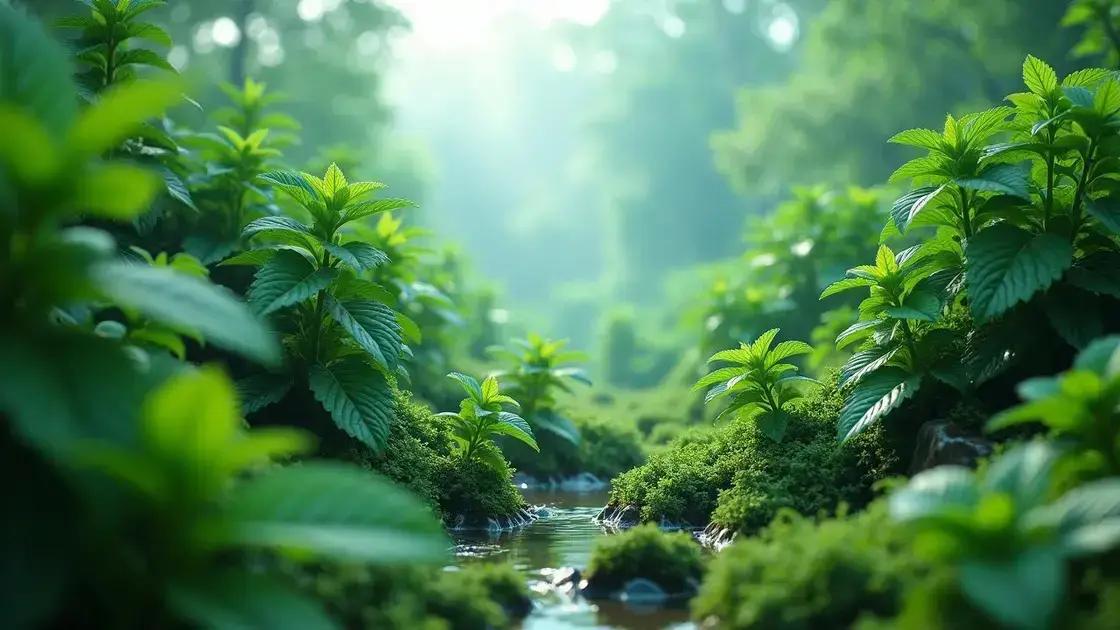How to Take Care of Peppermint Plant: 7 Tips for Thriving Growth
How to take care of peppermint plant requires a few simple yet effective strategies. A successful peppermint garden depends on understanding its unique needs. From sunlight to watering techniques, knowing how to provide the best environment ensures your plant thrives. Dive into these essential tips for vibrant growth.
Table of Contents
ToggleEssential sunlight needs for your peppermint plant
Essential sunlight needs for your peppermint plant are crucial to its health and growth. Peppermint thrives in environments that provide adequate light, ensuring the plant develops strong and fragrant leaves. Understanding the sunlight requirements can significantly impact your success in growing peppermint.
When cultivating peppermint, keep the following factors in mind:
- Optimal light exposure: Peppermint plants prefer 6-8 hours of indirect sunlight daily.
- Morning sun: Direct morning sunlight is ideal as it warms the plant without the harsh afternoon temperatures.
- Filter sunlight: If you live in hotter climates, consider using sheer curtains to filter intense light and prevent leaf scorch.
To enhance your indoor gardening experience, refer to this exploring indoor gardening techniques guide for tips on maintaining ideal light conditions.
Signs of insufficient sunlight
If your peppermint plant isn’t receiving enough light, you may notice:
- Leggy growth: The stems stretch towards the light, indicating they are trying to find more.
- Pale leaves: A sign that the plant is not producing enough chlorophyll due to inadequate light.
- Slow growth: Lack of energy from sunlight can stunt the plant’s overall development.
Adjusting light conditions
If you’re working with a less-than-ideal light setup, here are a few solutions:
- Rotate your plants regularly to ensure all sides receive equal light exposure.
- Use grow lights to supplement natural sunlight, especially during winter months.
- Keep your peppermint near south-facing windows for maximum sunlight exposure.
Experiment with different placements and lighting solutions to find what works best for your specific environment.
Watering techniques for optimal peppermint health

Watering techniques for optimal peppermint health are vital for maintaining the lush greenery and flavor of your plants. Understanding when and how to water your peppermint can make the difference between a thriving plant and one that struggles. Proper watering ensures that the plant absorbs the necessary nutrients and remains vigorous.
Here are some essential watering tips:
- Check soil moisture: Always check the soil moisture level before watering. The top inch of soil should be dry to the touch.
- Avoid overwatering: Overwatering can lead to root rot. Make sure to allow excess water to drain from the pot.
- Use room temperature water: Cold water can shock the plant; always use water that is at room temperature for best results.
In addition, keeping a regular watering schedule is key. For growing peppermint indoors, aim to water once a week, but adjust based on environmental conditions.
Signs of inadequate watering
Recognizing the signs of over or under-watering can help you adjust your techniques:
- Yellowing leaves indicate overwatering, while wilted leaves can suggest that your peppermint plant needs more water.
- Browning leaf tips can be a sign of underwatering. Ensure your watering methods provide ample moisture.
Techniques for efficient watering
Here are some effective watering techniques to ensure your peppermint plant remains healthy:
- Water in the morning when temperatures are cooler, allowing evaporation to be minimized during the hottest part of the day.
- Consider using a self-watering pot to maintain consistent moisture levels, especially during hotter months.
- Monitor humidity levels, as peppermint prefers slightly humid conditions. If indoors, use a pebble tray with water or a humidifier.
For more insights, consider exploring indoor gardening techniques to enhance your peppermint care.
Understanding pests that may affect peppermint plants
Understanding pests that may affect peppermint plants is crucial for maintaining their health and vitality. Like any plant, peppermint can be vulnerable to a variety of pests that may compromise its growth. Identifying these pests early can prevent larger issues down the line.
Some common pests to watch for include:
- Aphids: Small, green, or black insects that suck the sap from leaves, leading to wilting.
- Spider mites: Tiny pests that create fine webs and cause leaf discoloration.
- Whiteflies: Small white insects that thrive in warm environments, often causing yellowing leaves.
Signs of pest infestation
Knowing how to spot the signs of an infestation can help you take action before damage occurs:
- Wilting or yellowing leaves
- Visible bugs or webbing on the plant
- Stunted growth or leaf drop
Effective pest control methods
To keep your peppermint plants healthy, consider these pest management strategies:
- Regularly inspect plants for any signs of pests. Catching infestations early can prevent widespread damage.
- Use insecticidal soap or neem oil as an organic treatment for common pests.
- Encourage beneficial insects, such as ladybugs, which feed on pests like aphids.
For further insights, you may find value in exploring indoor gardening techniques that can enhance your overall understanding of pest management.
In conclusion
Caring for your peppermint plant requires attentiveness to its unique needs, including proper sunlight, watering techniques, and pest management. By providing your plant with the right conditions and knowledge, you can enjoy a healthy and thriving peppermint plant. As you explore further, consider checking out these tips on enhancing your indoor garden for even more insights and strategies that will benefit your gardening journey.

